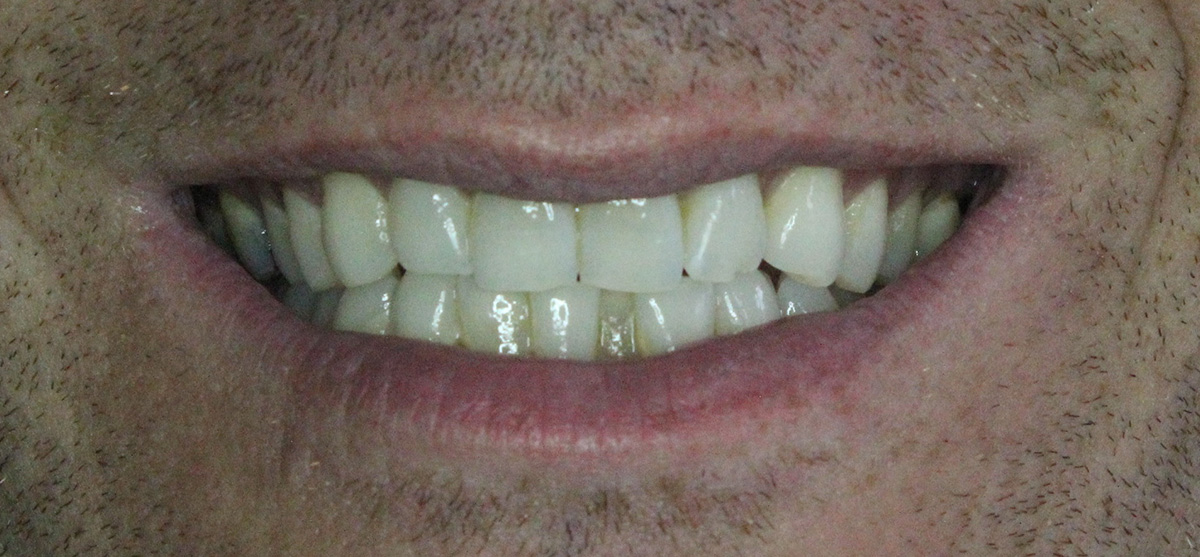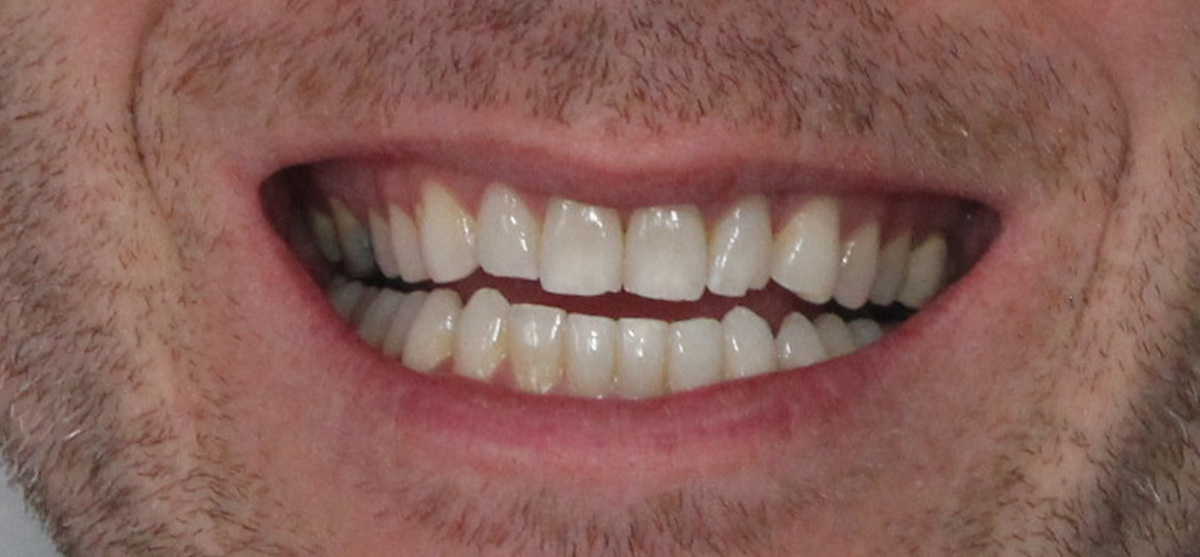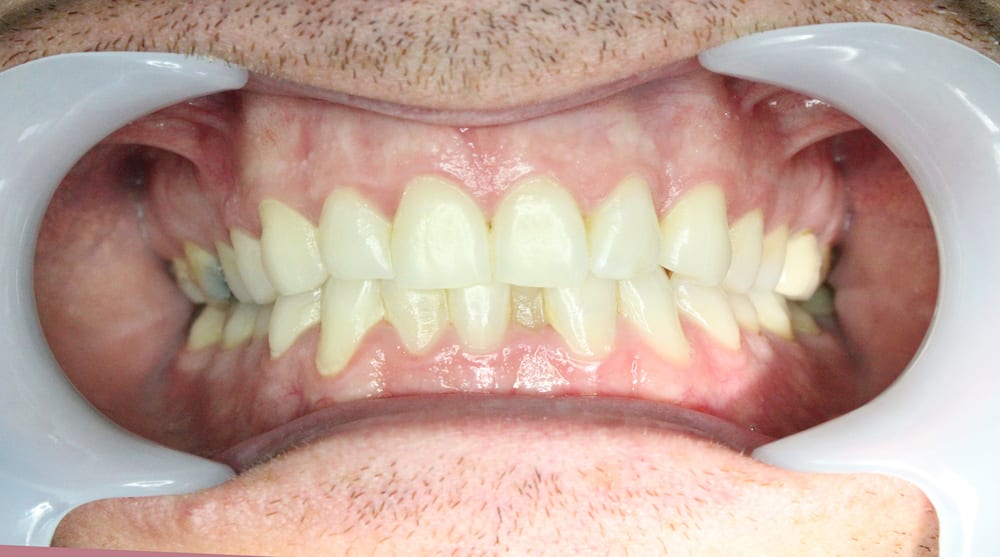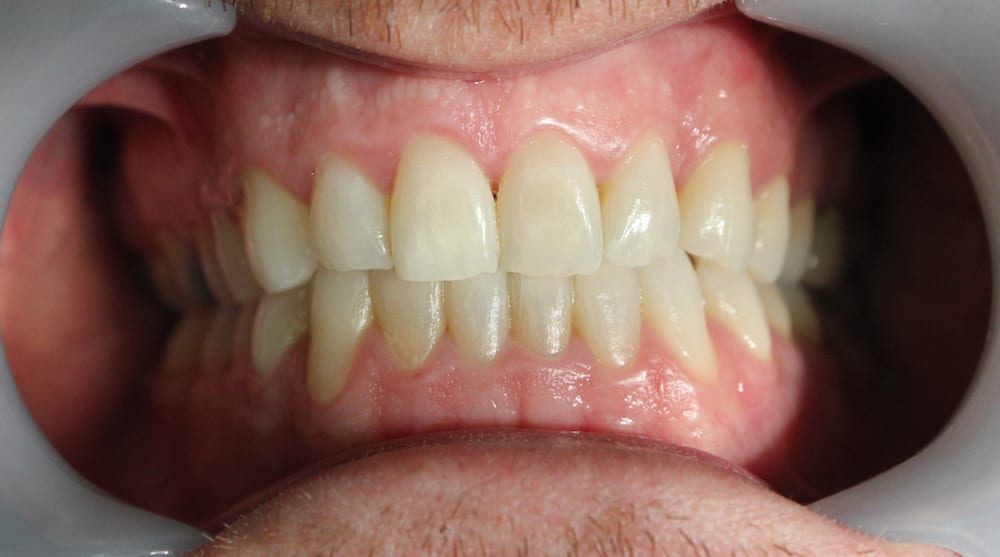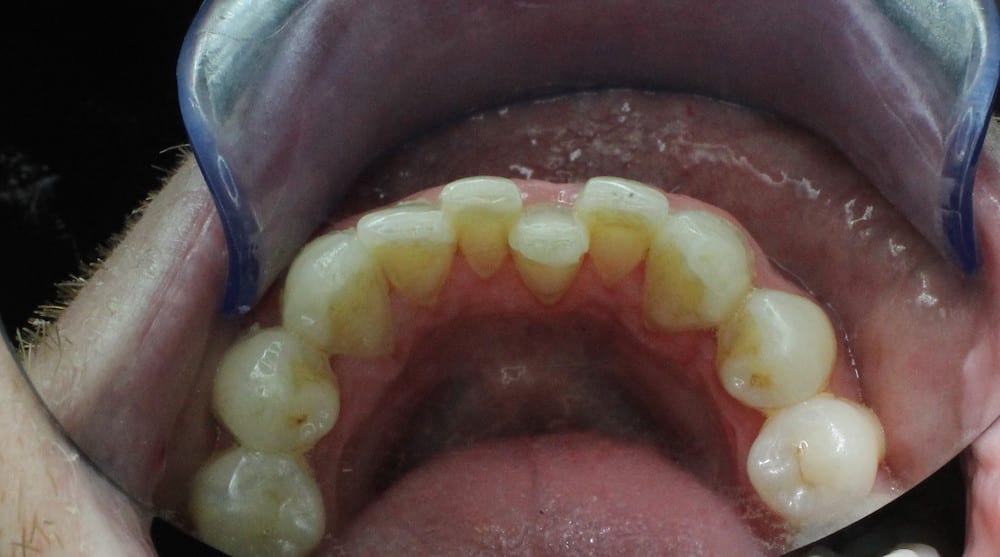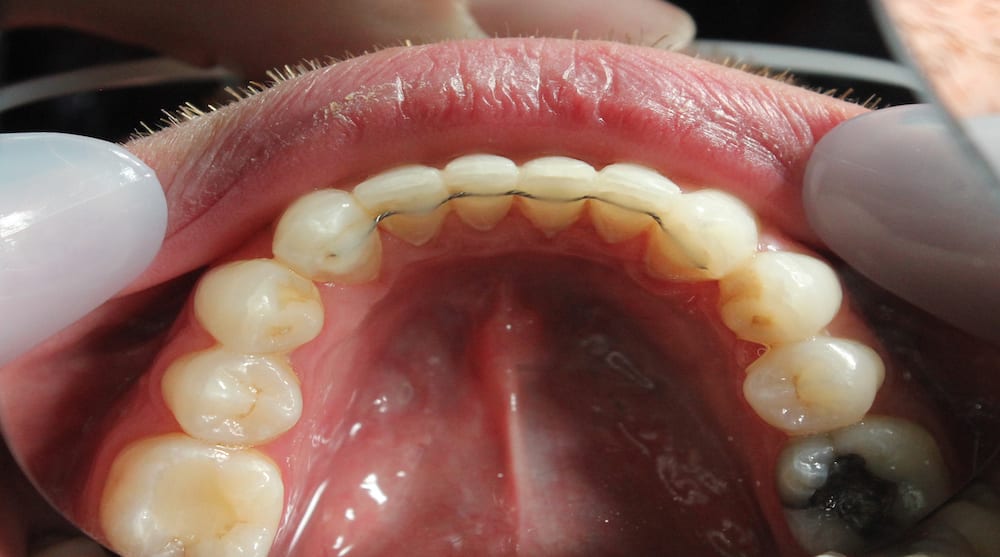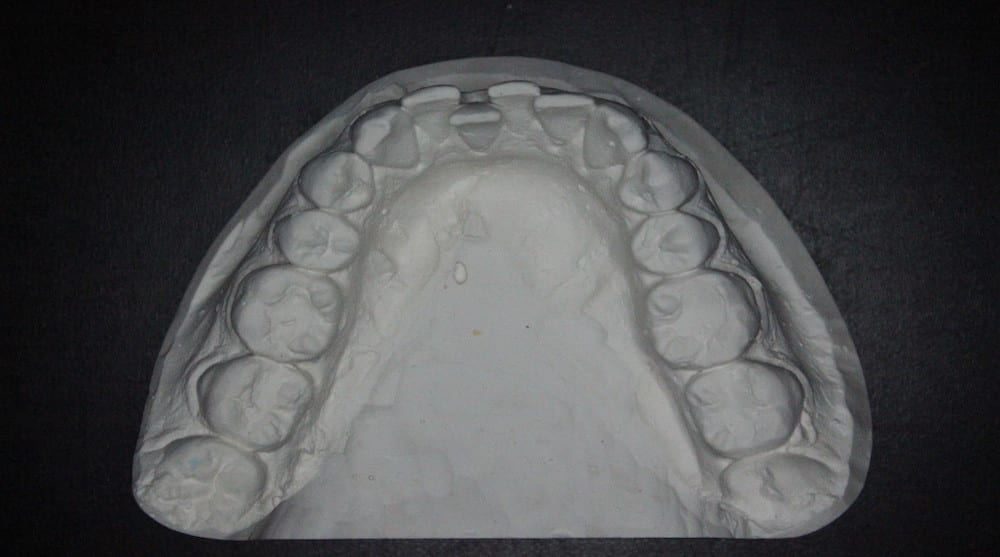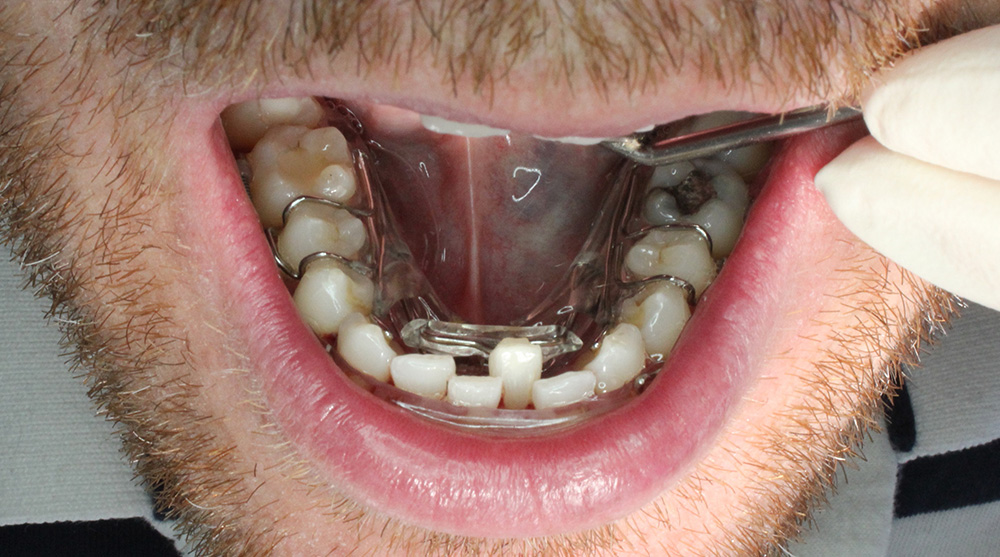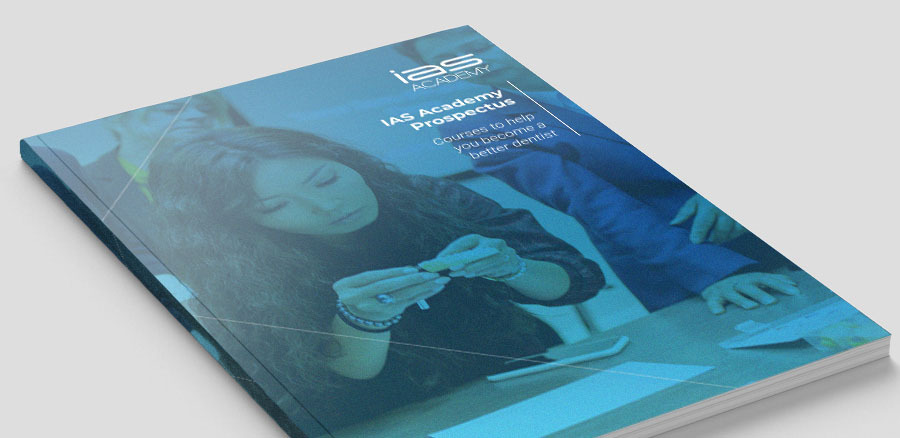Since taking the IAS Inman Aligner course last summer in Manchester, Dr Branton has gone on to complete several alignment cases using the innovative anterior alignment appliance. Here, she details one of her first cases.
Background
In this case, the patient’s chief complaint was the misalignment of his lower incisor and the level of staining that had resulted from being unable to clean the tooth correctly – it was almost black and appeared to be missing in photographs. Although he had been attending hygienist appointments every couple of months for a scale and polish, the effect of the misalignment on his overall dental health made him realise he needed to take further action. As his job involves presenting in the media, he made it clear from the beginning that he didn’t want a fixed appliance – it had to be removable so as not to affect his work.
Treatment options
Although various treatment options were discussed, detailing the benefits, risks and potential outcomes of various appliances, the IAS Inman Aligner presented as the most suitable option. At this time, tooth whitening and composite bonding were also discussed – as he had undergone whitening only a few years previously he decided against any additional treatment and wished to wait to see if bonding was necessary.
Pre-treatment
As intraoral and extraoral examinations revealed no abnormalities and periapical radiographs supported this, the Spacewize+™ arch evaluation software was used to calculate the level of crowding. As there was a significant amount, the case was submitted to an IAS Inman Aligner Laboratory for a treatment plan and further advice on the case suitability. The returned plan detailed that 1.2 mm of expansion would be needed – using a lower jaw expander – along with 2.8 mm of interproximal reduction (IPR). With the lab’s help and advice of IAS Academy tutors through the online support, the intended outcome could be achieved safely and effectively.
Treatment
When the appliance was fitted during the initial appointment, the patient was shown how to insert and remove it safely, ensuring he was completely comfortable with the process before continuing.
At this time bite blocks were placed on the 7s to open his bite and the patient was shown how to activate the screw on the lower expander with instructions to turn it once a week for 14 weeks. A composite lingual anchor was also placed on LL1.
For the predictive proximal reduction (PPR), the teeth were measured on the model before carrying out treatment on the patient. As I was concerned about the patient’s commitment to the appliance, I performed very little IPR and PPR at first. Once his compliance became apparent, more IPR and PPR was completed – although still progressive, this created more space and enabled much more significant movement of the teeth.
As soon as LL1 had come into alignment, the composite anchor was removed and a medio-lingual anchor was instead placed on LR2 to assist with de-rotation. A short time after, the composite anchor was changed again and was placed on the buccal aspect of LL2 in attempt to bring it back.
Outcome
Unfortunately, the patient was unable to wear the appliance for the recommended 20 hours a day throughout treatment – sometimes wearing it for as little as 16 hours a day or less – so the results took longer to achieve than initially anticipated.
However, as the patient understood the reasons for this, he was very happy with the outcome of treatment and opted against composite bonding in the end. Firstly, he didn’t feel that it would add any aesthetic value, and secondly, he was concerned about the level of maintenance that it would require. Since concluding the treatment the patient has been given a new bleaching tray for home whitening and a fixed retainer was fitted to ensure retention.
Although in hindsight I could have been a little less cautious with the IPR and PPR, I am very happy with the results of this case, as one of my first with anterior alignment treatment and the IAS Inman Aligner.


